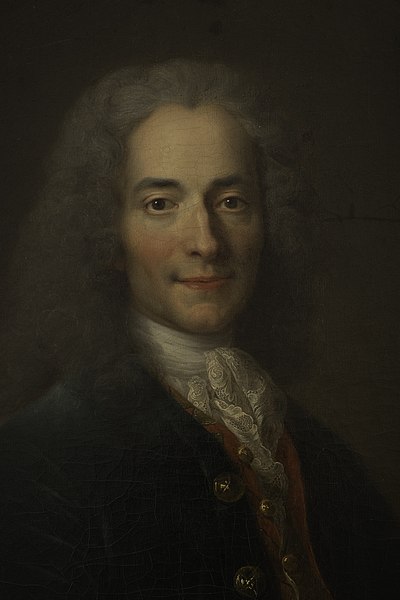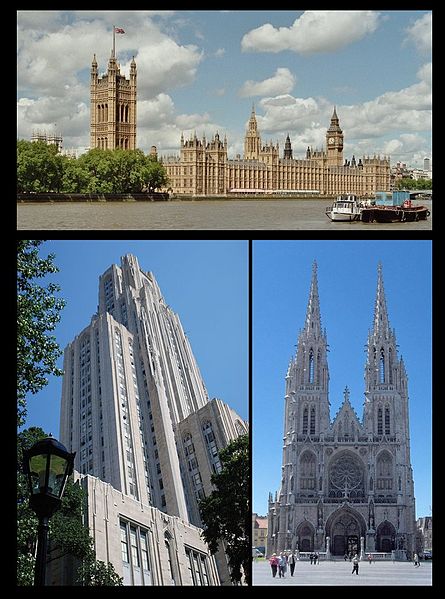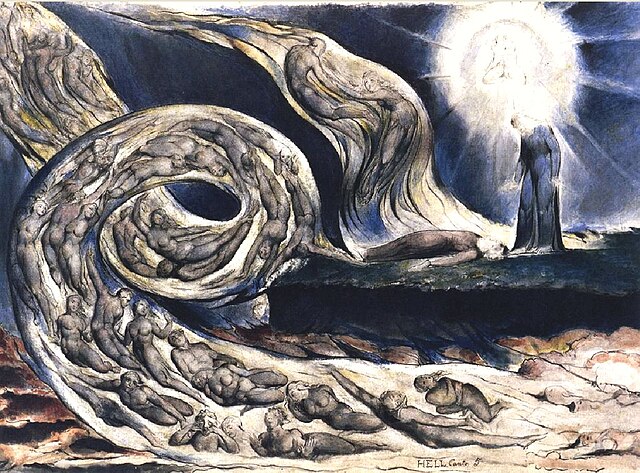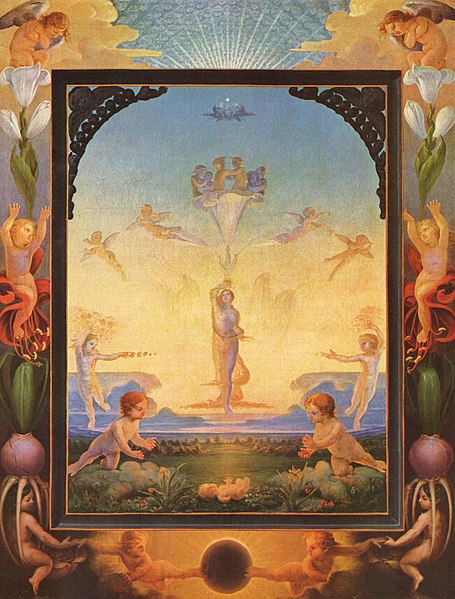Medievalism is a system of belief and practice inspired by the Middle Ages of Europe, or by devotion to elements of that period, which have been expressed in areas such as architecture, literature, music, art, philosophy, scholarship, and various vehicles of popular culture. Since the 17th century, a variety of movements have used the medieval period as a model or inspiration for creative activity, including Romanticism, the Gothic revival, the pre-Raphaelite and arts and crafts movements, and neo-medievalism .
Historians have attempted to conceptualize the history of non-European countries in terms of medievalisms, but the approach has been controversial among scholars of Latin America, Africa, and Asia.
The Middle Ages in art: a Pre-Raphaelite painting of a knight and a mythical seductress, the lamia (Lamia by John William Waterhouse, 1905)
Voltaire, one of the key Enlightenment critics of the medieval era
Notable Neo-Gothic edifices: top – Palace of Westminster, London; left – Cathedral of Learning, Pittsburgh; right – Sint-Petrus-en-Pauluskerk, Ostend
William Blake's The Lovers' Whirlwind illustrates Hell in Canto V of Dante's Inferno.
Romanticism was an artistic and intellectual movement that originated in Europe towards the end of the 18th century. The purpose of the movement was to advocate for the importance of subjectivity, imagination, and appreciation of nature in society and culture during the Age of Enlightenment and the Industrial Revolution.
Caspar David Friedrich, Wanderer above the Sea of Fog, 1818
Eugène Delacroix, Death of Sardanapalus, 1827, taking its Orientalist subject from a play by Lord Byron
Philipp Otto Runge, The Morning, 1808
William Blake, The Little Girl Found, from Songs of Innocence and Experience, 1794








